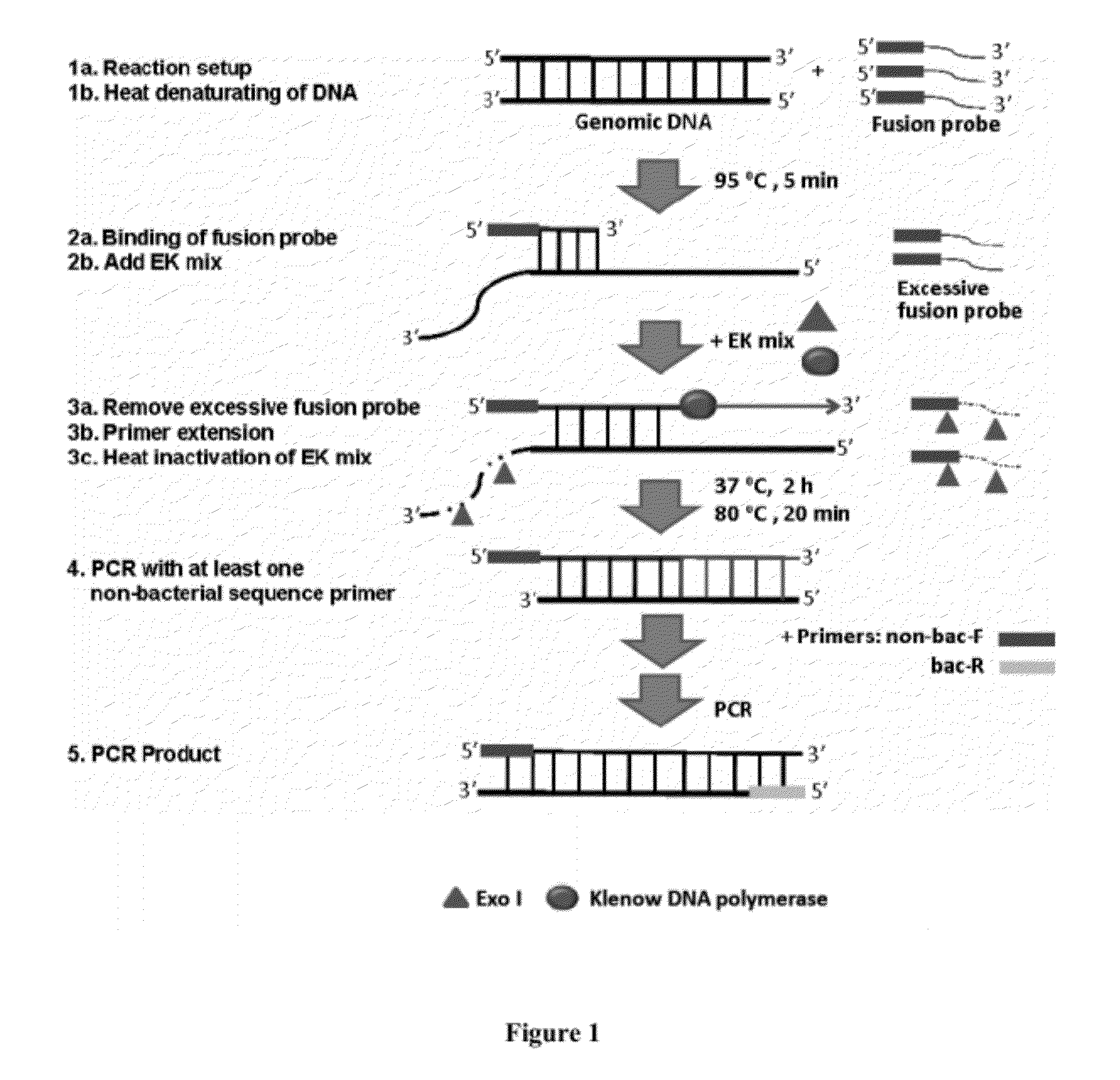Methods, systems, and compositions for detection of microbial DNA by PCR
a technology of microbial dna and composition, applied in the field of molecular assays, can solve the problems of limiting the practical application of pcr in microbial detection, affecting the detection accuracy of pcr, so as to achieve the effect of accurate, inexpensive and sensitiv
- Summary
- Abstract
- Description
- Claims
- Application Information
AI Technical Summary
Benefits of technology
Problems solved by technology
Method used
Image
Examples
examples
[0069]Broad-range detection of low abundance bacteria by PE-PCR
[0070]Several “low-DNA” and HotStart Taq DNA polymerases are available from commercial sources. As a starting point, we first examined 4 commercially available low-DNA or HotStart Taq DNA polymerases to demonstrate that they are not suitable for broad-range amplification of bacterial DNA using the universal primer set p201-p1370.
[0071]With these polymerases, we performed classical PCR to amplify a sample containing 100 fg of representative Staphylococcus aureus bacterial genomic DNA (equivalent to 20 copies of bacterial genome) and a “no template control (NTC)”. As shown in FIG. 2, a significant amount of amplified DNA product was found in the NTC reaction, rendering it indistinguishable from the sample reaction. This result confirms that commercially available Taq DNA polymerase and PCR reagents are not sufficiently pure for broad-range bacterial DNA detection in a clinical setting in which detection limits at the fento...
PUM
| Property | Measurement | Unit |
|---|---|---|
| Electrical conductance | aaaaa | aaaaa |
Abstract
Description
Claims
Application Information
 Login to View More
Login to View More - R&D
- Intellectual Property
- Life Sciences
- Materials
- Tech Scout
- Unparalleled Data Quality
- Higher Quality Content
- 60% Fewer Hallucinations
Browse by: Latest US Patents, China's latest patents, Technical Efficacy Thesaurus, Application Domain, Technology Topic, Popular Technical Reports.
© 2025 PatSnap. All rights reserved.Legal|Privacy policy|Modern Slavery Act Transparency Statement|Sitemap|About US| Contact US: help@patsnap.com



